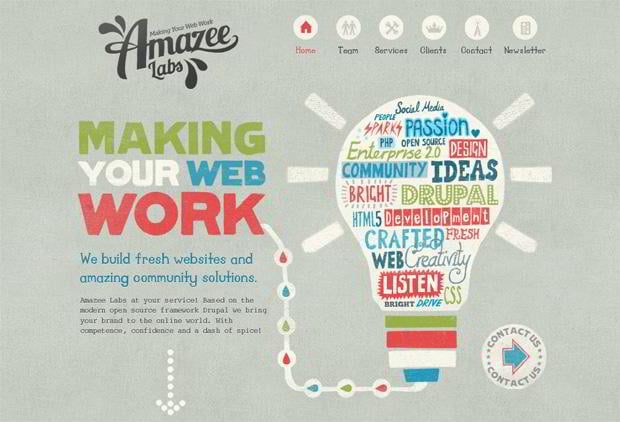The Growth Of Website Style: From Earlier Times To Currently
The Growth Of Website Style: From Earlier Times To Currently
Blog Article
Material Created By-Booker Hejlesen
In the past, sites were straightforward and focused on information. Navigating was straight, and style was for desktop computers. Now, individual experience is key. Data guides designs for simple navigating. Responsive formats match different tools. Today, dark setting minimizes stress, and minimalist food selections enhance navigating. Interactive features engage customers, and vibrant visuals stick out. AI assimilation increases interaction. See exactly how style has developed to enhance your online journey.
Early Days of Website Design
In the early days of web design, simplicity reigned supreme. Internet sites were fundamental, with restricted colors, typefaces, and layouts. The emphasis was on offering details as opposed to showy visuals. search engine optimization web marketing accessed the internet through sluggish dial-up links, so rate and capability were essential.
Navigation menus were straightforward, typically located at the top or side of the page. Sites were created for computer, as mobile browsing had not been yet common. Web content was king, and developers prioritized simple readability over complicated layout aspects.
HTML was the primary coding language made use of, and developers had to work within its restrictions. Animations and interactive features were minimal compared to today's criteria. Sites were fixed, with little vibrant web content or customized customer experiences.
Increase of User-Focused Style
With the evolution of web site style, a shift in the direction of user-focused style concepts has actually ended up being increasingly prominent. Today, producing web sites that prioritize customer experience is critical for involving visitors and attaining organization objectives. User-focused style includes understanding the needs, choices, and habits of your target market to customize the internet site's layout, web content, and features accordingly.
Developers currently carry out extensive research, such as customer studies and functionality testing, to collect insights and responses directly from customers. This data-driven method helps in developing intuitive navigating, clear calls-to-action, and visually attractive interfaces that reverberate with visitors. By putting https://dominicknidys.blog-kids.com/26593365/tackle-slow-moving-loading-rates-with-these-5-reliable-techniques-to-enhance-user-experience-on-your-web-site at the center of the design process, web sites can supply a much more personalized and delightful experience.
Responsive layout has actually likewise become a key aspect of user-focused layout, ensuring that internet sites are maximized for numerous tools and screen dimensions. This versatility enhances access and use, satisfying the diverse means users communicate with sites today. Basically, the rise of user-focused design signifies a shift in the direction of creating electronic experiences that prioritize the demands and assumptions of the end customer.
Modern Trends in Website Design
Check out the latest patterns forming web design today. One famous pattern is dark setting layout, using a smooth and modern-day appearance while minimizing eye strain in low-light environments. One more essential trend is minimal navigation, streamlining menus and enhancing customer experience by concentrating on essential elements. Incorporating micro-interactions, such as computer animated buttons or scrolling results, can produce an extra interesting and interactive site. you could look here stays important, making certain smooth individual experiences throughout numerous gadgets. In addition, using bold typography and unbalanced formats can include visual rate of interest and draw attention to specific web content.
Integrating AI innovation, like chatbots for customer assistance or tailored referrals, improves individual engagement and enhances procedures. Accessibility has additionally end up being a considerable fad, with developers prioritizing comprehensive design techniques to accommodate diverse user needs. Accepting sustainability by optimizing web site performance for rate and efficiency is one more emerging pattern in website design. Working together with customer feedback and information analytics to repeat and enhance design constantly is important for remaining pertinent in the ever-evolving digital landscape. By embracing https://searchengineoptimizationb11975.blog-gold.com/32531129/discover-strategies-to-improve-your-site-s-sales-by-learning-just-how-to-develop-styles-that-encourage-conversions-and-boost-profits-via-valuable-understandings-provided-in-this-post , you can develop a visually attractive, user-friendly internet site that resonates with your target market.
Final thought
As you review the advancement of internet site layout from the early days to currently, you can see exactly how user-focused design has actually come to be the driving pressure behind modern trends.
Embrace the trip of change and adjustment in web design, constantly keeping the customer experience at the leading edge.
Stay present with the latest patterns and innovations, and never ever quit evolving your technique to produce visually magnificent and straightforward web sites.
Progress, adjust, and develop - the future of website design is in your hands.
